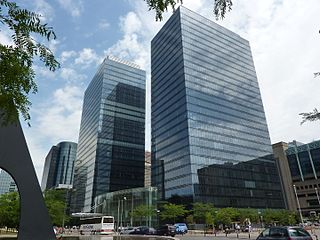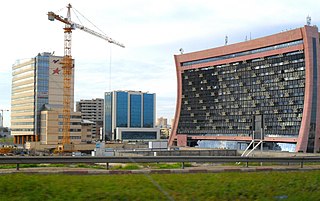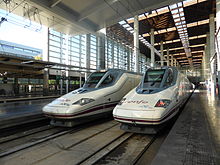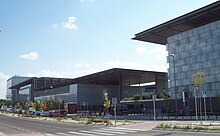The economy of Colombia is the fourth largest in Latin America as measured by gross domestic product and the third-largest economic power in South America. Colombia has experienced a historic economic boom over the last decade. Throughout most of the 20th century, Colombia was Latin America's 4th and 3rd largest economy when measured by nominal GDP, real GDP, GDP (PPP), and real GDP at chained PPPs. Between 2012 and 2014, it became the 3rd largest in Latin America by nominal GDP. As of 2018, the GDP (PPP) per capita has increased to over US$14,000, and real gross domestic product at chained PPPs increased from US$250 billion in 1990 to nearly US$800 billion. Poverty levels were as high as 65% in 1990, but decreased to under 30% by 2014, and 27% by 2018. They decreased by an average of 1.35% per year since 1990.

The economy of the Czech Republic is a developed export-oriented social market economy based in services, manufacturing, and innovation that maintains a high-income welfare state and the European social model. The Czech Republic participates in the European Single Market as a member of the European Union, and is therefore a part of the economy of the European Union. It uses its own currency, the Czech koruna, instead of the euro. It is a member of the Organisation for Economic Co-operation and Development (OECD). The Czech Republic ranks 16th in inequality-adjusted human development and 24th in World Bank Human Capital Index, ahead of countries such as the United States, the United Kingdom or France. It was described by The Guardian as "one of Europe's most flourishing economies".

The economy of Morocco is considered a relatively liberal economy, governed by the law of supply and demand. Since 1993, in line with many Western world changes, Morocco has followed a policy of privatisation of certain economic sectors which used to be in the hands of the government. Morocco has become a major player in African economic affairs, and is the 5th largest African economy by GDP (PPP). The World Economic Forum placed Morocco as the most competitive economy in North Africa, in its African Competitiveness Report 2014–2015.

The economy of Romania is a complex high-income economy with a skilled labour force, ranked 12th in the European Union by total nominal GDP and 7th largest when adjusted by purchasing power parity. The World Bank notes that Romania's efforts are focused on accelerating structural reforms and strengthening institutions in order to further converge with the European Union. The country's economic growth has been one of the highest in the EU since 2010, with 2022 seeing a better-than-expected 4.8% increase.

The economy of Spain is a highly developed social market economy. It’s the world's 15th largest by nominal GDP and the sixth-largest in Europe. Spain is a member of the European Union and the eurozone, as well as the Organization for Economic Co-operation and Development and the World Trade Organization. In 2021, Spain was the twentieth-largest exporter in the world and the sixteenth-largest importer. Spain is listed 27th in the United Nations Human Development Index and 37th in GDP per capita by the World Bank. Some of the main areas of economic activity are the automotive industry, medical technology, chemicals, shipbuilding, tourism and the textile industry.

The economy of the United Kingdom is a highly developed social market economy. It is the sixth-largest national economy in the world measured by nominal gross domestic product (GDP), ninth-largest by purchasing power parity (PPP), and twenty-first by nominal GDP per capita, constituting 3.1% of nominal world GDP. The United Kingdom constitutes 2.3% of world GDP by purchasing power parity (PPP).

The economy of Belgium is a highly developed, high-income, mixed economy.

The economic history of Argentina is one of the most studied, owing to the "Argentine paradox". As a country, it had achieved advanced development in the early 20th century but experienced a reversal, which inspired an enormous wealth of literature and diverse analysis on the causes of this decline. Since independence from Spain in 1816, the country has defaulted on its debt nine times; inflation has often risen to the double digits, even as high as 5000%, resulting in several large currency devaluations.

The economy of France is a highly developed social market economy with notable state participation in strategic sectors. It is the world's seventh-largest economy by nominal GDP and the ninth-largest economy by PPP, constituting around 4% of world GDP. Due to a volatile currency exchange rate, France's GDP as measured in dollars fluctuates sharply. France has a diversified economy, that is dominated by the service sector, whilst the industrial sector accounted for 19.5% of its GDP and the primary sector accounted for the remaining 1.7%. In 2020, France was the largest Foreign Direct Investment recipient in Europe, and Europe's second largest spender in research and development. It was ranked among the 10 most innovative countries in the world by the 2020 Bloomberg Innovation Index, as well as the 15th most competitive nation globally according to the 2019 Global Competitiveness Report. It was the fifth-largest trading nation in the world. France is also the most visited destination in the world, as well as the European Union's leading agricultural power.

The Community of Madrid is one of the seventeen autonomous communities of Spain. It is located in the centre of the Iberian Peninsula, and of the Central Plateau. Its capital and largest municipality is the City of Madrid, which is also the capital of the country. The Community of Madrid is bounded to the south and east by Castilla–La Mancha and to the north and west by Castile and León. It was formally created in 1983, in order to adress the particular status of the City of Madrid as the national capital city and in urban hierarchy. Its limits are those of the province of Madrid, which was until then conventionally included in the historical region of New Castile.

The economy of the European Union is the joint economy of the member states of the European Union (EU). It is the second largest economy in the world in nominal terms, after the United States and the third one in purchasing power parity (PPP) terms, after China and the United States. The European Union's GDP estimated to be around $18.35 trillion (nominal) in 2023 representing around one sixth of the global economy. Germany has by far the biggest national GDP of all EU countries, followed by France and Italy.

This article covers the development of Spain's economy over the course of its history.

The economic history of Portugal covers the development of the economy throughout the course of Portuguese history. It has its roots prior to nationality, when Roman occupation developed a thriving economy in Hispania, in the provinces of Lusitania and Gallaecia, as producers and exporters to the Roman Empire. This continued under the Visigoths and then Al-Andalus Moorish rule, until the Kingdom of Portugal was established in 1139.

Algeria's economy continued to recover in the first half of 2022, led by a return of oil production to pre-pandemic levels and a continued recovery of the service sector along with a more vigorous agricultural activity. The recovery should continue into 2023, supported by the nonhydrocarbon sector and public expenditure growth, according to the latest edition of the World Bank's Algeria Economic Update.

The 2008–2014 Spanish financial crisis, also known as the Great Recession in Spain or the Great Spanish Depression, began in 2008 during the world financial crisis of 2007–08. In 2012, it made Spain a late participant in the European sovereign debt crisis when the country was unable to bail out its financial sector and had to apply for a €100 billion rescue package provided by the European Stability Mechanism (ESM).

The economic history of Morocco has largely been charted by the national government through a series of five-year plans. Centralized planning has gradually given way to moderate privatization and neoliberal economic reforms.
Since the foundation of the New Kingdom of Galicia, the Mexican state of Jalisco has established itself as a main hub in the national economy and as the business centre of the western portion of the country. Although its economic strength is mainly concentrated in the capital, Guadalajara, the rest of the state enjoys a growing prosperity in diverse economic areas. Forest products are obtained along the coast, and mining for silver, gold, mercury, copper, and precious stones is an important activity. The beverage tequila, distilled from the juice of the agave cactus, is named for the town of that name in Jalisco and is one of the state’s best-known products. Since the state is home to two UNESCO World Heritage Sites, tourism is an important economic engine. In 2006 20 million local and international tourists visited the state, contributing to an economic revenue of 25 billion pesos, 11% higher than in 2005. Guadalajara is served by one of the country’s busiest airports and is one of the state’s major tourist centres. Puerto Vallarta is a popular tourist destination among young students. The state ranks number three in terms of nominal GDP behind Nuevo León State. Since the adoption of the North American Free Trade Agreement (NAFTA) in 1994 the state has been experiencing a high rate of investment. Jalisco, like many other industrial states in the country, has evolved from a producer of cheap, low-quality goods into an exporter of sophisticated products, from auto brake systems to laptop computers. 86% of the population is urban, higher than the national average of 76%.

Milan is the capital of the Lombardy region in northern Italy and is the wealthiest city in Italy. Milan and Lombardy had a GDP of €400 billion and €650 billion respectively in 2017. Milan surpassed Berlin in the size of its economy in 2014, and has since been the richest city among the Four Motors for Europe. It is a member of the Blue Banana corridor among Europe's economic leaders.

The Crisis of 1982 was a major economic crisis suffered in Chile during the military government of Chile (1973–1990). Chile's GDP fell 14.3%, and unemployment rose to 23.7%.

Madrid is the capital and most populous city of Spain. The city has almost 3.4 million inhabitants and a metropolitan area population of approximately 6.7 million. It is the second-largest city in the European Union (EU), and its monocentric metropolitan area is the second-largest in the EU. The municipality covers 604.3 km2 (233.3 sq mi) geographical area. Madrid lies on the River Manzanares in the central part of the Iberian Peninsula at about 650 metres above mean sea level. Capital city of both Spain and the surrounding autonomous community of Madrid, it is also the political, economic and cultural centre of the country. The climate of Madrid features hot summers and cool winters.




























